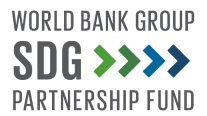GENDER DIVERSITY & INCLUSION FROM THE WORKFORCE TO THE BOARDROOM
TOOL SUITE 1
WHAT’S IN THE TOOL SUITE?

BENEFITS OF GENDER INCLUSIVITY
inclusivity - great for business

TOOL SUITE 1
HOW TO USE THIS TOOL SUITE
Where Does Your Company Stand on Gender Diversity and Inclusion?

- Develop a Business Case to demonstrate the business benefits of investing in gender equity.
- Once management is on board and willing to invest in a more in-depth understanding of the issues, conduct a Gender Audit.
- An Employee Scorecard drills down and clarifies issues raised during an audit to identify priority issues and develop an action plan.
- A Pay Gap Survey can complement an audit or scorecard and shed light on real and perceived imbalances.
- A Board Gender Assessment can also complement a broader assessment to identify issues at the board level.

How Can You Improve Gender Diversity and Inclusion at Your Company?

- Develop an overarching Gender Policy that clearly outlines a high-level approach to gender inclusion and diversity.
- Develop a complementary Gender Strategy to implement the Gender Policy.
- Develop a terms of reference for a gender champion or focal point to lead gender initiatives.
- Update HR policies to make existing and new policies more gender inclusive .
- Set gender-inclusive recruitment targets.
- Address any identified gender equity and inclusiveness challenges on the Board.
- Help senior management to demonstrate its commitment to gender equity, through the creation of gendered policies, targets, and staff capacity.
- A Gender Task Force can provide feedback on how gender issues are perceived, as well as disseminate information and receive feedback on policies and programs related to gender.
- Ensure men and women are equally supported in remote work.
- Reduce implicit workplace biases around gender.
- Strengthen the talent pipeline with guidelines for attracting and retaining talent.
- Attract diverse applicants with gender inclusive job descriptions.
- Develop female talent through mentorship and career development.

How Do You Know If Measures to Improve Gender Diversity and Inclusion are Working?

- Identify measures to monitor progress.
- Monitor training programs for gender-equitable career development to ensure sustainability.

Fast Facts
WOMEN IN BUSINESS
 32%
32%
Source: IRENA
 18%
18%
Source: World Bank
 15%
15%
Source: IDB
 1.5%
1.5%
Source: EY
 38%
38%
Source: European Commission
 100%
100%
Source: European Commission









